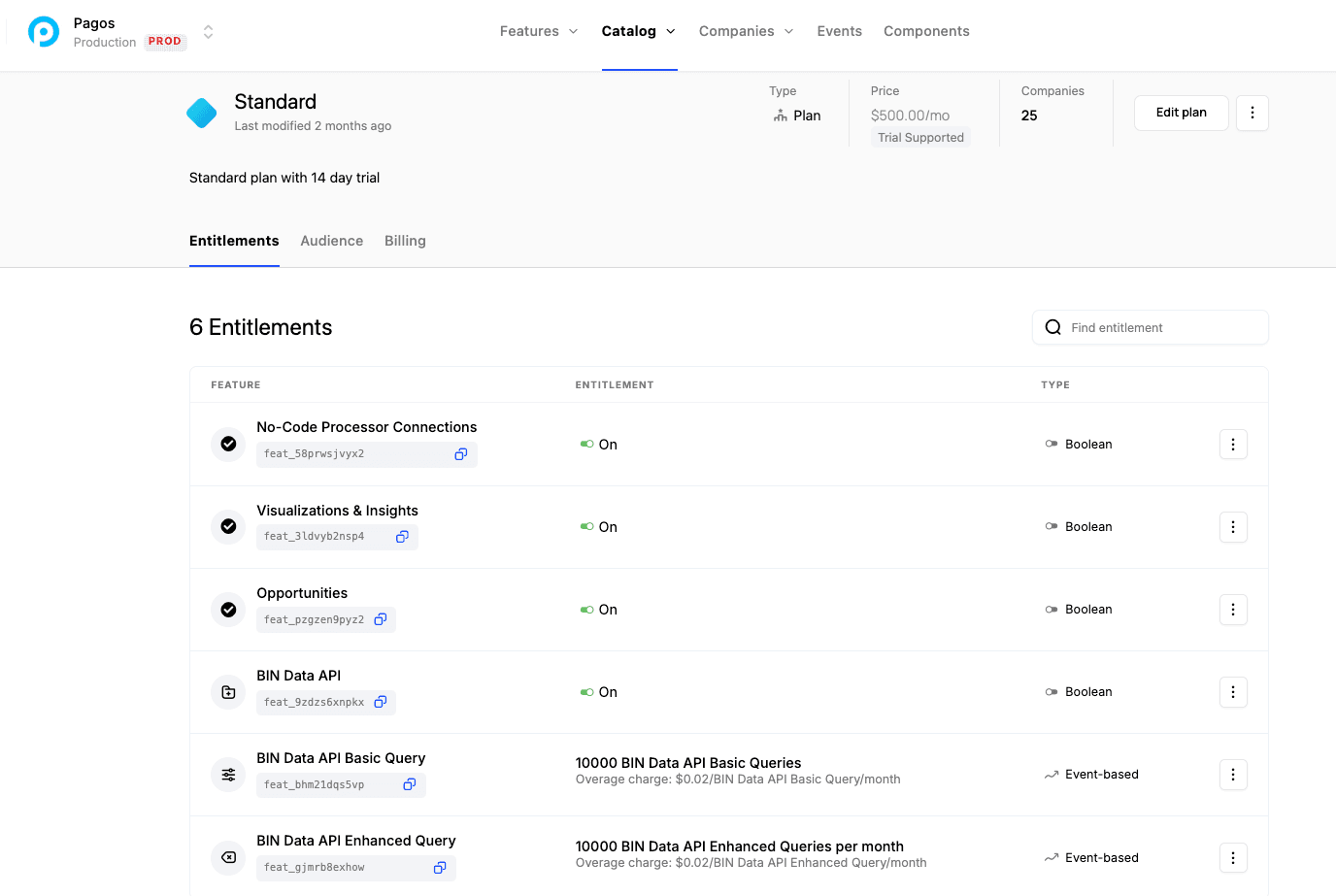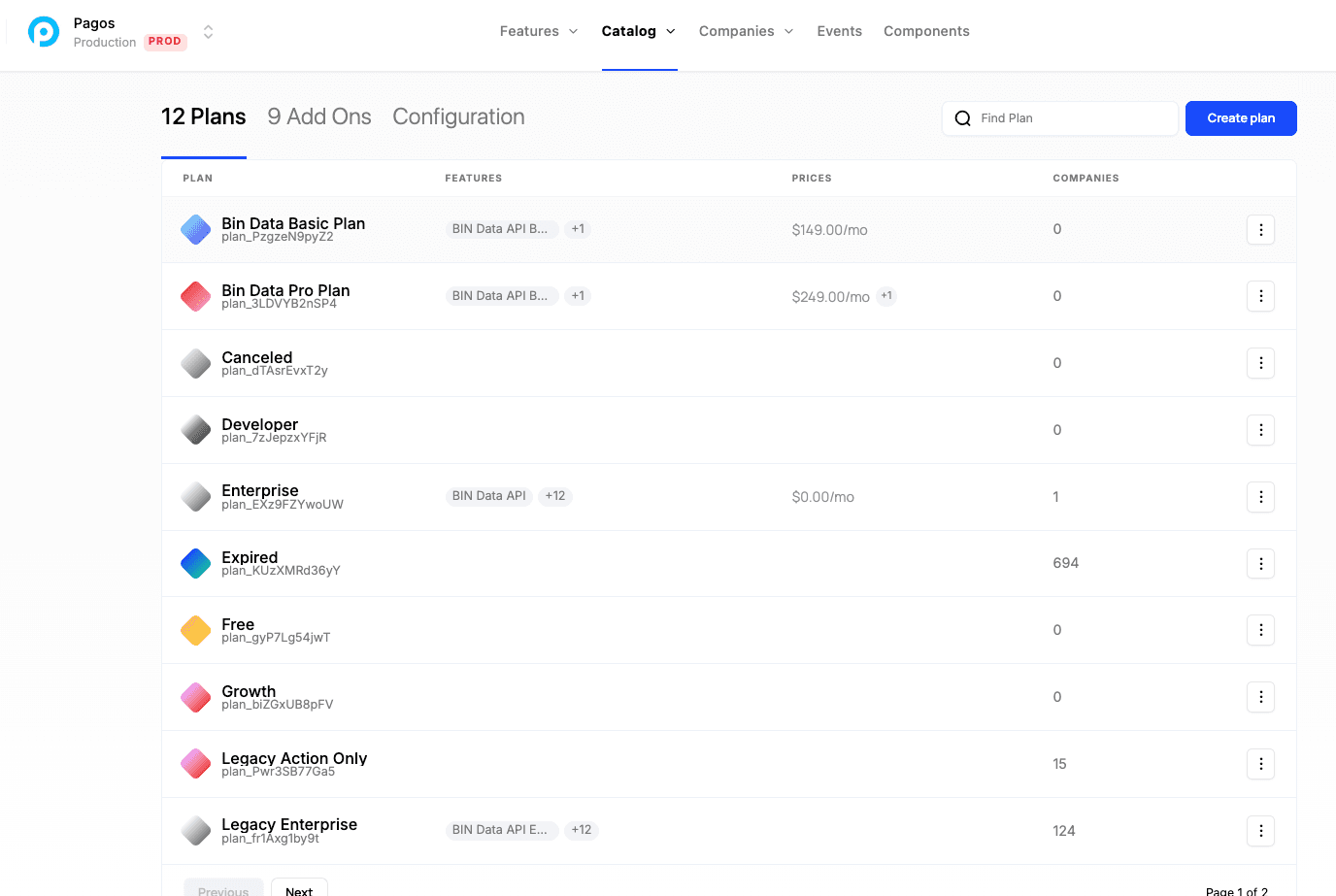“Everyone was different… so it made standardizing and ultimately end-of-month billing painful.” — Andy Barker, Head of Product, Pagos
Customer Overview
Pagos is a data-first payments intelligence platform that helps companies make better decisions about how they process payments. From optimizing authorization rates to understanding payment failures and routing costs, Pagos gives teams the tools to turn messy processor data into clear business insights.
Two key leaders helped drive their billing transformation:
Andy Barker, Head of Product for Pagos' Action Tools, focuses on building the components that help customers visualize and act on their payments data.
Jeffrey Durante (LJ), Program Manager on the product team, works across engineering, operations, and product management to keep initiatives aligned and moving, especially when it comes to technical projects like monetization.
As the platform evolved, so did the need for more flexible, scalable billing. Pagos had started with manual processes and a homegrown approach, but those systems came with clear limitations. Supporting both sales-led and product-led growth, enforcing usage limits, and enabling hybrid pricing models wasn’t realistic without significant ongoing investment. They needed a system purpose-built to handle the complexity, without distracting the team from core product work.
Before Schematic
Pagos relied on custom contracts and spreadsheet based billing. Entitlements were manually tracked. Usage was collected by hand. Every customer required a touchpoint from the commercial or finance team.
“We just went through a spreadsheet to see the usage, then looked at everyone's specific plan to calculate billing manually. There was no enforcement.” — Jeffrey Durante, Program Manager, Pagos
The result: inconsistent experiences, delayed billing, and hours of time lost each month reconciling data.
The Challenge
“How do we take advantage and serve the $1K–$5K ACV segment?” — Andy Barker
Pagos needed two things:
A way to support product-led growth for smaller customers.
A reliable system for enforcing entitlements and metering usage-based plans.
Pagos needed a single billing system that could support both sales-led and product-led growth. While their commercial team focused on large enterprise deals, Pagos also wanted to capture smaller ACV customers through self-serve. But supporting both PLG and SLG is a heavy lift for most homegrown billing systems. The product team needed infrastructure that could handle complex, contract-driven plans as well as usage-based pricing and feature gating for PLG.

Implementing Schematic
Getting started wasn’t without hurdles. Pagos had legacy systems to untangle and lacked a dedicated team to own billing. But Schematic’s support and product flexibility helped them move quickly.
“There was baggage on our side. But I jumped into the interface and understood what was being done without having to read a ton of docs. That’s a good UX.” — Andy Barker
Schematic helped Pagos separate access from usage, build clean entitlement logic, and meter API consumption in a way that matched their pricing model. For the first time, billing wasn’t something patched together at the end -- it became a core part of the product.

The Result
Schematic gave Pagos a foundation for monetization that scales:
Automation replaced manual billing.
Self-serve unlocked PLG.
Product teams iterated without backend rework.
Pricing strategy shifted from “can we?” to “what should we?”
“If we had to build it ourselves, it might be a 3–4 month project. Now it becomes config, not code.” — Andy & LJ
Billing is now a lever, not a bottleneck.